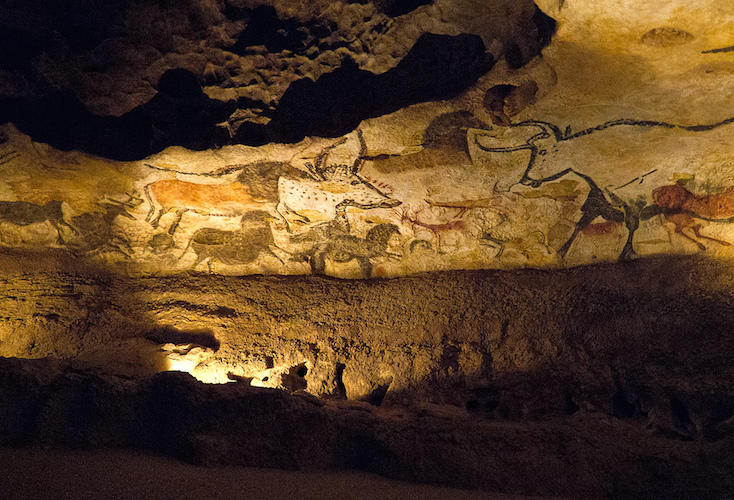GLOBAL PREHISTORY VOCAB
5.0(1)
5.0(1)
Card Sorting
1/37
Earn XP
Description and Tags
30,000-500 BCE
Study Analytics
Name | Mastery | Learn | Test | Matching | Spaced |
|---|
No study sessions yet.
38 Terms
1
New cards
anthropomorphic
human-like
2
New cards
art mobiler
small-scale prehistoric art that is moveable, such as the *Apollo 11 Cave Stones.*
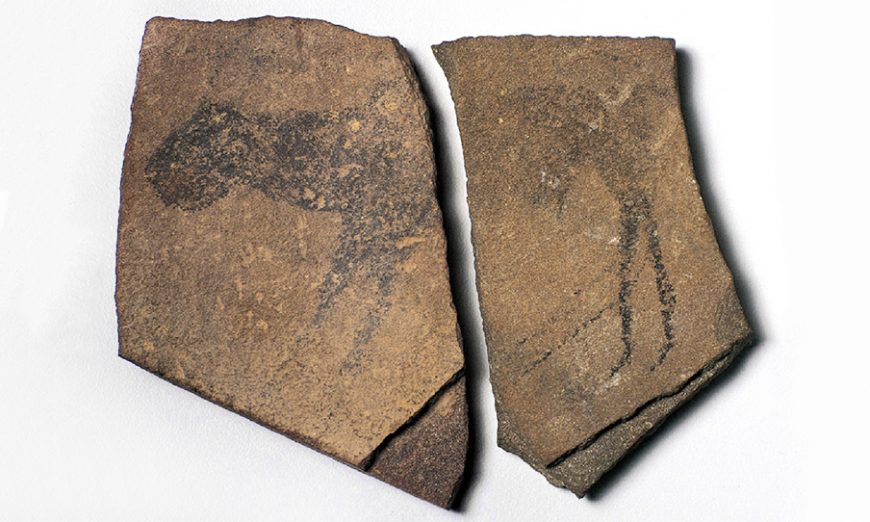
3
New cards
avian
something related to birds
4
New cards
bicephalic
two-headed figures
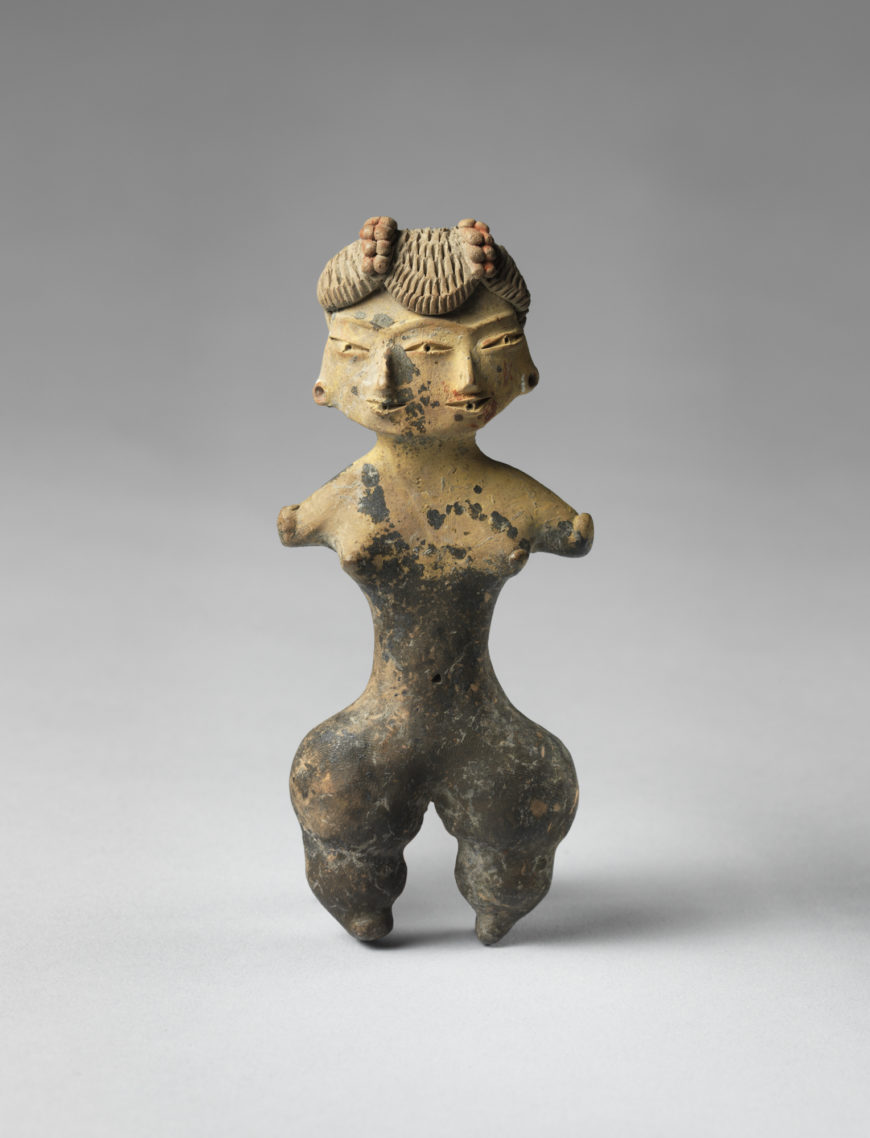
5
New cards
bovid
the bovidae are the biological family of mammals that includes bison, African buffalo, water buffalo, antelopes, gazelles, sheep, goats, muskoxen, and domestic cattle
6
New cards
camelid
a member of the camelidae family, such as camels, llamas, and alpacas
7
New cards
dentate
something that has a tooth-like or serrated edge
8
New cards
exogenous materials
materials that originated elsewhere
9
New cards
hominids
a primate of family (*Hominidae*) that includes humans and their fossil ancestors, and also some great apes; humans evolved from an earlier specifics of hominids
10
New cards
*homo sapiens*
anatomically modern humans who evolved from an earlier species of hominids
11
New cards
maize
also known as corn; first domesticated by Indigenous peoples in what is today Mexico c. 10,000 years ago
12
New cards
Melanesia
\n refers to a region of the western Pacific that includes the islands and island groups of Fiji, New Guinea, the Solomon Islands, and Vanuatu
13
New cards
Mesoamerica
refers to the diverse civilizations that shared similar cultural characteristics in the geographic areas comprising the modern-day countries of Mexico, Guatemala, Honduras, Belize, El Salvador, Nicaragua, and Costa Rica
14
New cards
Micronesia
the region of the western Pacific referred to as Micronesia includes the Federated States of Micronesia, Guam, Kiribati, Mariana Islands, the Marshall Islands, Nauru, Palau, and Wake Island
15
New cards
Middle Stone Age
a period of African prehistory between the Early Stone Age and the Later Stone Age, generally considered to have begun around 280,000 years ago and ended around 50–25,000 years ago
16
New cards
mortars and pestles
a mortar is a bowl and pestle is an object used to grind against the sides of the mortar; they are commonly made of hard material such as stone and are often used to prepare food
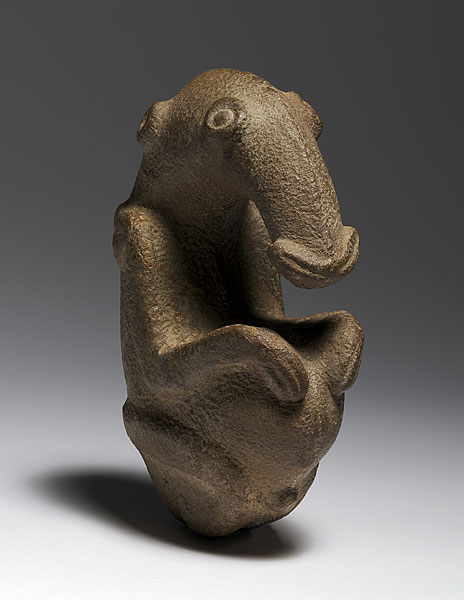
17
New cards
Neanderthals
an extinct species of humans named after the site in which their bones were first discovered—the Neander Valley in Germany; they existed between c. 120,000–35,000 years ago
18
New cards
Neolithic period
literally means "New Stone Age," and dates from the 6th–4th millennium B.C.E.
19
New cards
Neolithic Revolution
dates to c. 10,00–3,000 B.C.E, and refers to when humans began to settle into communities, domesticate animals, and grow crops
20
New cards
nomad
an individual who roams about without a fixed residence
21
New cards
oryx
a large grazing antelope
22
New cards
paddle-and-anvil technique
a method of smoothing and finishing the walls of hand-made pottery; the anvil is held against the inner walls while a paddle is used to shape the outer surface
23
New cards
Paleolithic
literally means "Old Stone Age," and dates from c. 2.5 millions years ago–10,000 B.C.E. It predates the Neolithic period
24
New cards
petroglyph
a rock engraving in which an image has been pecked or cut into the rock
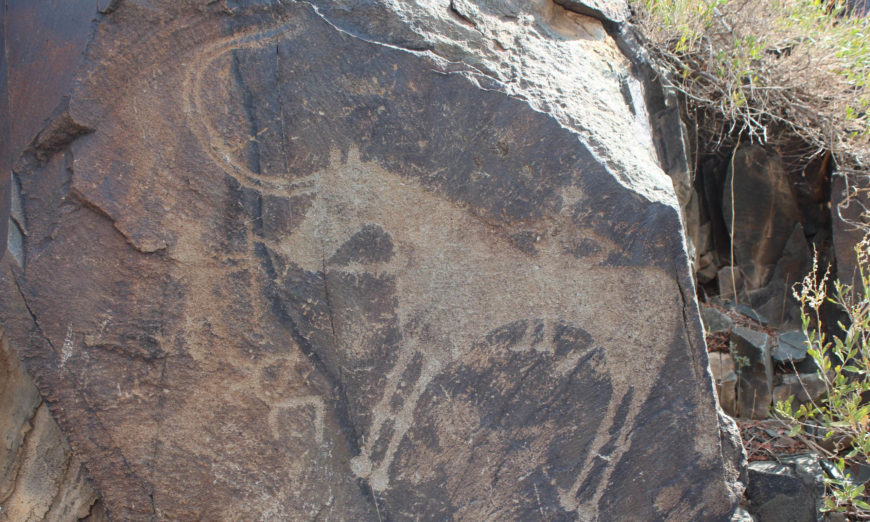
25
New cards
Polynesian Triangle
stretches from Hawai'i in the north to Aotearoa (New Zealand) in the south, and Rapa Nui (Easter Island) in the east
26
New cards
potsherds
fragments of pottery
27
New cards
prehistoric
literally means before the invention of writing
28
New cards
sacrum
the large triangular bone at the base of the spine
29
New cards
shaman
a kind of priest or healer with powers involving the ability to communicate with spirits of other worlds
30
New cards
Shang Dynasty
the earliest Chinese dynasty verified by scholars, ruling from c. 1600–1050 B.C.E.
31
New cards
*simting bilong tumbuna*
literally translates as the “bones of the ancestors”; Enga term for a class of cult objects which were used as powerful ritual mechanisms where ancestors reside
32
New cards
slipped pottery
made up of tiny particles of clay suspended in water and can be colored with iron oxide or other minerals to decorate the surface of a pot
33
New cards
stele
a vertical stone monument or marker often inscribed with text or relief carving
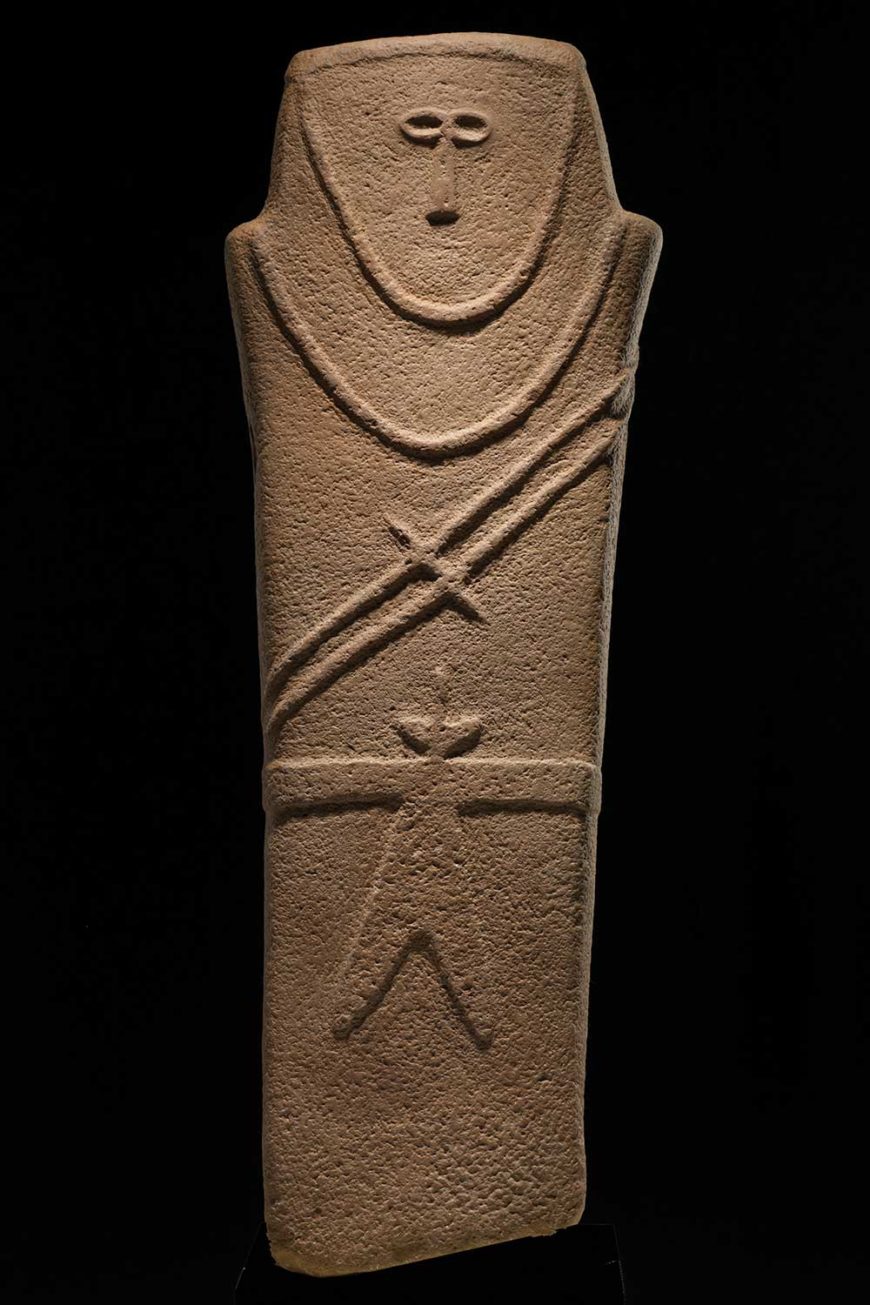
34
New cards
stratigraphic archaeology
the study of stratification, or layers deposited one atop another over time
35
New cards
temper
often sand or other added materials, temper reduces the elasticity of clay (how much it shrinks) and helps to avoid cracking during the firing process
36
New cards
Therianthrope
a supernatural creature that is part animal and part human
37
New cards
trilithon
a pair of upright stones with a lintel stone spanning their tops
38
New cards
twisted perspective
when animal bodies are depicted in profile while we see the horns from a more frontal viewpoint
